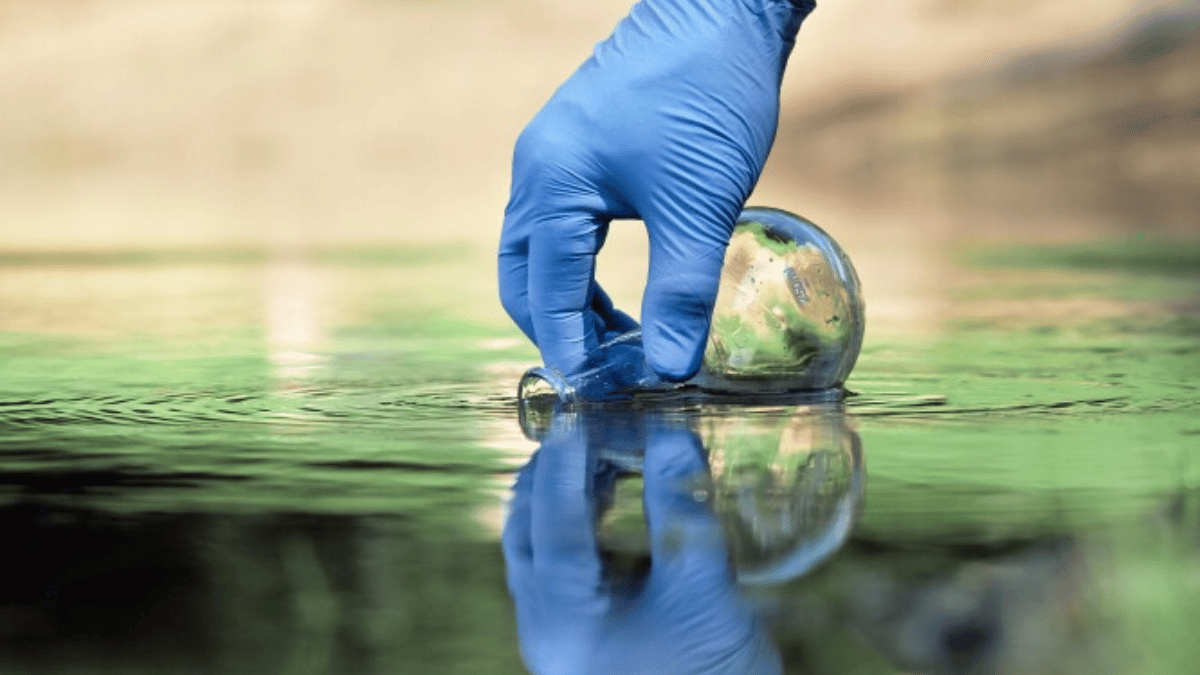With toxic “forever chemicals” being detected in waterways statewide, the pollutants have caught the attention of both the public eye and state legislators.
PFAS are a group of around 10,000 manmade chemicals that have been used to manufacture both industrial and consumer products for around 80 years. More commonly known as “forever chemicals,” they’re known to cause health problems like liver damage, higher cholesterol, cancer and a weakened immune system, among others.
Most famously, PFAS chemicals have been used to create industrial-grade firefighting foam and have been used by companies like Chemours and Dupont to create Teflon. But they’re also found in products like food packaging and water-resistant jackets.
“These products end up in landfills, many of them can have leachate that gets into the groundwater and percolates through the soil,” Jenna Dodson, staff scientist at the West Virginia Rivers Coalition, said.
Dodson was among the panelists at a public conference addressing PFAS earlier this month in Shepherdstown, located in the Eastern Panhandle.
Levels of PFAS chemicals above the federal EPA’s health advisories have been found in 130 raw water supplies statewide, with the state’s Departments of Environmental Protection and Health and Human Resources currently testing the state’s treated water systems as well.
In 2019, the CDC reported that state residents living near the Shepherd Field Air National Guard Base in Martinsburg had blood concentrations of PFAS higher than the national average. Bases like that use the PFAS firefighting foam, and it is believed the chemicals contaminated much of the local waterways. Martinsburg’s Big Springs water filtration plant was temporarily shut down in 2016 after high levels of the chemicals were found.
“They’re in our waterways, it’s in our soil, it’s in our air because it also travels via air deposition,” Dodson said. “And so that’s why they’re so ubiquitous and again, localized contamination can occur.”
In the region alone, there are 36 raw water supplies that have been identified as having unsafe amounts of the chemicals. That area, along with the Ohio River Valley, is considered a “PFAS hot zone” in West Virginia, though they’ve been found in water supplies statewide.
Dodson was joined by Brent Walls of the Potomac Riverkeeper Network. He’s studying PFAS’ effects on the Potomac River’s aquatic ecosystem by surveying small-range fish species in the area. He discovered some fish in the nearby Antietam Creek in Maryland had elevated amounts of the chemicals in their tissue.
“That was extremely alarming because smallmouth bass is a popular recreational fish species, not only for catch and release, but also for families and communities to take home to eat,” Walls said.
Health advisory guidelines released by the EPA in 2022 say anything above 0.004 parts per trillion for PFOA or 0.02 parts per trillion for PFOS are considered unsafe. PFOA and PFOS are two common PFAS subgroups.
“That would be one drop of PFOS in 20 Olympic sized pools,” Walls said. “That’s the kind of visualization of how small the amount of this pollutant has an impact.”
Walls is worried state and local agencies wouldn’t be able to properly measure and treat PFAS because of how little amounts are needed to infiltrate waterways to contaminate them.
“Those tests are expensive,” Walls said. “And even if the facilities are able to find the lab to provide the analysis for their influent or effluent (river systems), or even for the drinking water that goes out to the public, then they have to find the resources to address the situation, to implement some level of protection, some kind of a water treatment to remove the PFAS down to those levels. And that’s going to cost some money.”
That’s a concern echoed by John Bresland, one of the local citizens in attendance at the Shepherdstown conference Walls and Dodson spoke at. He’s also a member of the town’s water board.
“I know that the current wastewater plant that we have will not be able to remove PFAS,” Bresland said. “So we need to get some guidance from the EPA if, and when, the time comes.”
The EPA is set to propose a national drinking water standard regulating PFOA and PFOS by the end of this year. That could come as early as this Spring, according to EPA senior advisor Rod Snyder, who also spoke at the conference.
Other locals in attendance, like David Lillard, were concerned about both his health as well as the health of the local environment.
“We’re a headwater state,” Lillard said. “So water that flows from our mountains is not only our drinking water, it is a drinking water for people in the Ohio Valley. And in the Potomac River Basin. It’s 5 million people just in the Washington, DC area.”
In the state legislature, bills have been introduced in both the House and Senate that would require the state Department of Environmental Protection to create an action plan to address PFAS chemicals, have state manufacturing facilities monitor and self-report PFAS discharge and would enforce a limit on said discharges statewide.
Senate Bill 485 passed through the Senate Agriculture and Natural Resource Committee and is currently in the Finance Committee. The House of Delegates’ equivalent bill, HB 3189, passed the House as of Friday. It’s now on its way to the Senate.
